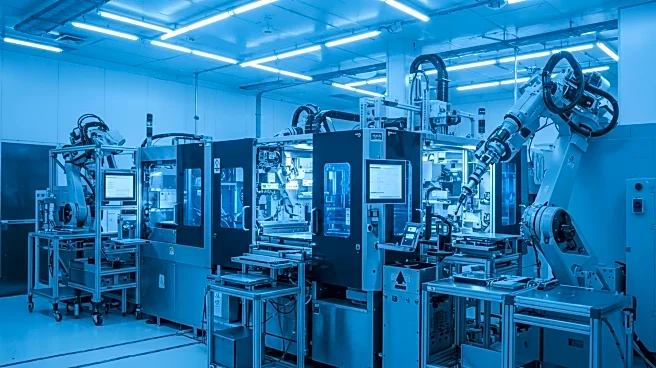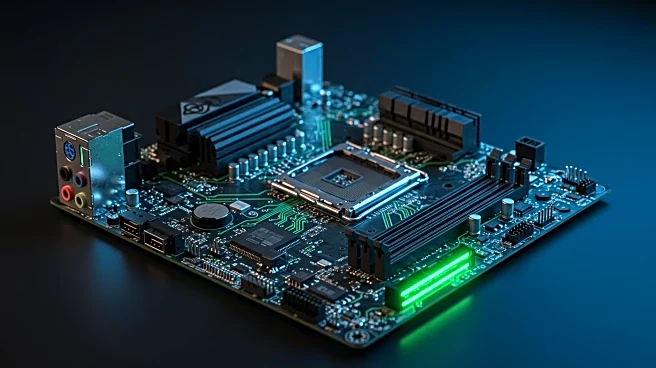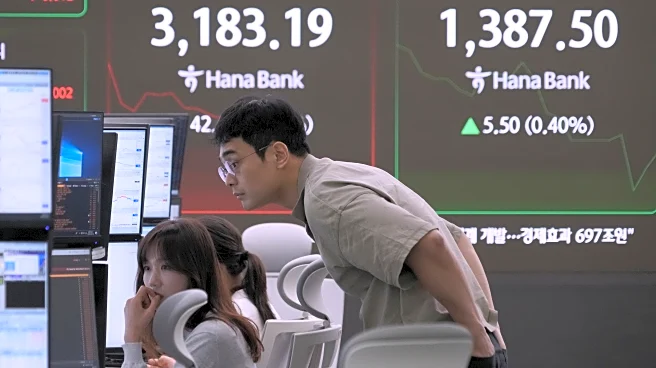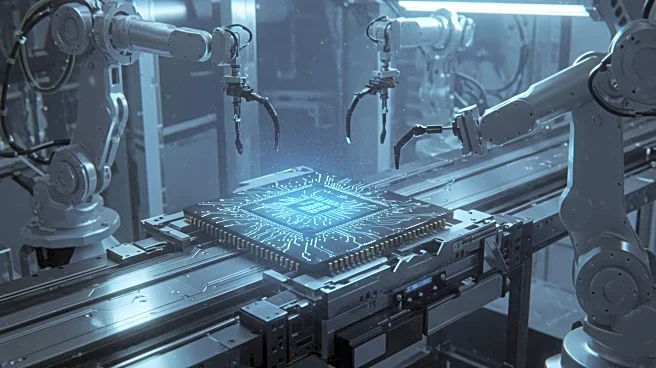What's Happening?
Taiwan Semiconductor Manufacturing Co (TSMC), the world's largest contract chipmaker, has reported its first profit from its Arizona subsidiary. The unit, wholly owned by TSMC, posted a net profit of NT$4.52 billion (US$150.1 million) in the first half of the year, marking a significant turnaround from a loss of NT$4.34 billion a year earlier. This positive financial outcome is attributed to robust market demand and high factory utilization. The Arizona facility began high-volume production in the fourth quarter of last year, utilizing advanced 4-nanometer process technology. The company plans to ramp up production with 3-nanometer technology soon. Major customers of the Arizona unit include Apple Inc, Nvidia Corp, and Advanced Micro Devices Inc. In contrast, TSMC's Japanese unit reported a widening loss, highlighting the differing performance across its global operations.
Why It's Important?
The profitability of TSMC's Arizona unit underscores the growing demand for advanced semiconductor technologies in the U.S. market, which is crucial for tech giants like Apple and Nvidia. This development is significant as it reflects the strategic importance of domestic semiconductor production, especially amid global supply chain challenges and geopolitical tensions. The success of TSMC's Arizona operations may encourage further investment in U.S.-based semiconductor manufacturing, potentially reducing reliance on foreign production and enhancing national security. Additionally, the substantial government subsidies received by TSMC highlight the role of public policy in supporting technological advancements and infrastructure development.
What's Next?
TSMC's Arizona unit is expected to continue expanding its production capabilities, with plans to introduce 3-nanometer technology soon. This advancement could further strengthen its position in the semiconductor market and attract more business from major tech companies. The company is also eligible for a 25 percent investment grant on qualified projects, which may facilitate further growth and innovation. Stakeholders, including government entities and industry leaders, will likely monitor these developments closely, considering the implications for U.S. technological competitiveness and economic growth.












